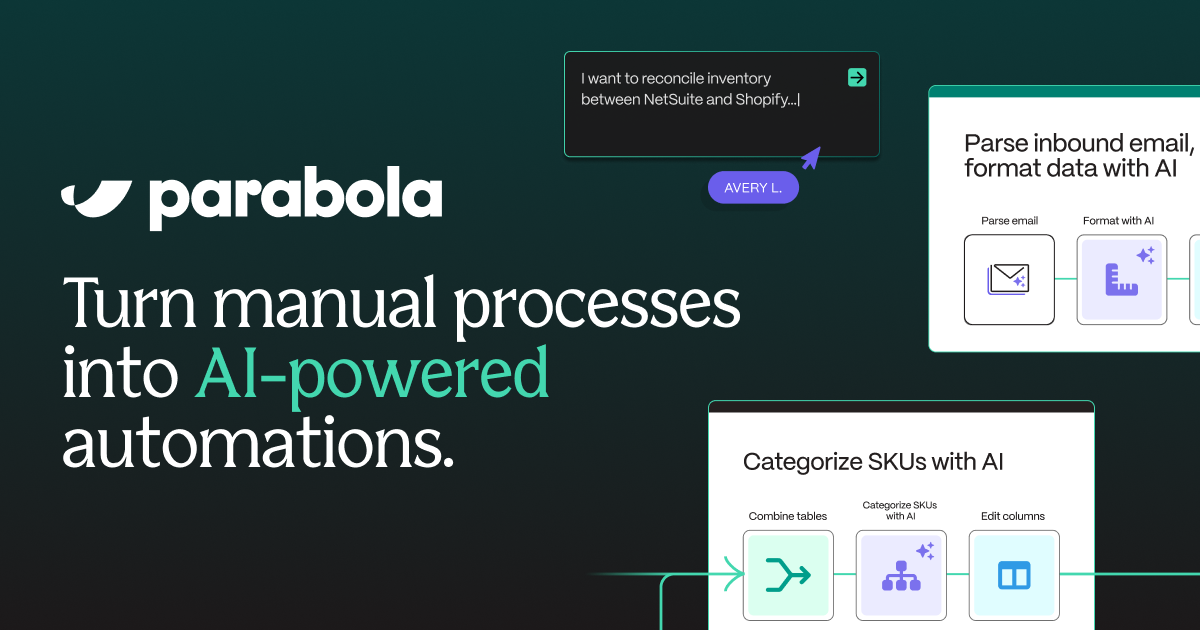Combine and Join Tables From Your Shopify Data – Free Template
Combine and join tables from your Shopify data without writing a single line of code.

Combine and join tables from your Shopify data without writing a single line of code.









Parabola's Shopify integration enables seamless e-commerce data management and transformation.
Connecting your Shopify store to Parabola is straightforward using the Pull from Shopify step. This integration allows you to access various data types from your store, including orders, products, customers, and inventory information.
The Combine tables step in Parabola allows you to merge data sets from different sources based on matching columns. This powerful feature enables you to create comprehensive views of your business data and perform advanced analytics – mirroring the functionality of a vlookup in Excel.
Combine customer data with order history to calculate lifetime value metrics. This joined dataset enables you to identify your most valuable customers and analyze their purchasing patterns over time.
Merge product data with sales history to create a comprehensive view of inventory performance. This combination helps in predicting stock requirements and optimizing reorder points across different locations.
Join customer demographic data with purchase history to evaluate marketing campaign performance. This unified view allows you to measure the success of targeted promotions and adjust strategies accordingly.
By leveraging Parabola's powerful combination capabilities with your Shopify data, you can create sophisticated analyses and automate complex workflows. The visual nature of Parabola's platform makes it accessible to users of all technical levels, while still providing the flexibility to handle complex data operations.








Request a demo and see how Parabola can automate
your most manual SOPs.